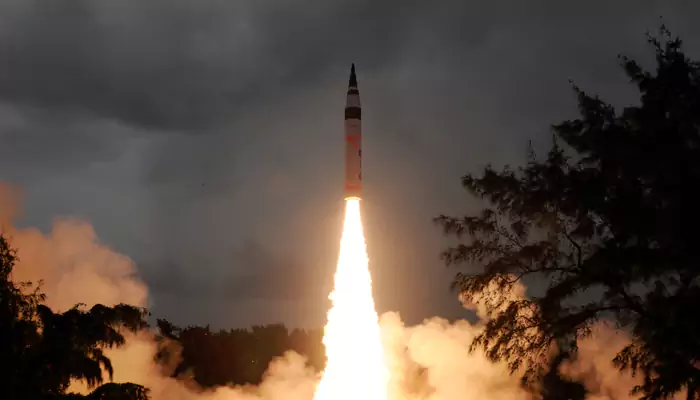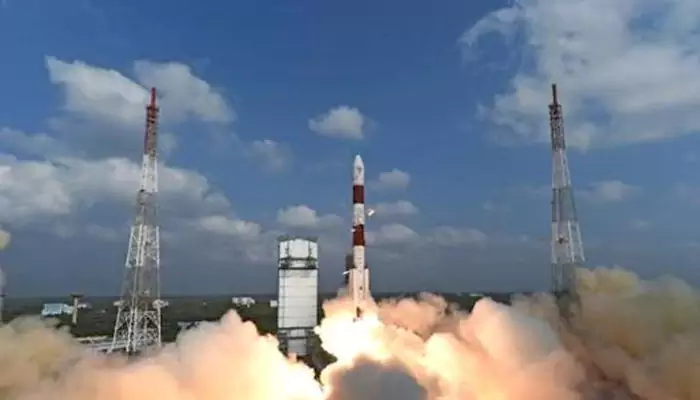PM Modi's Singapore Visit: What Makes Singapore A Leader In Semiconductor Industry, And How It May Benefit India
- Sayan Paul
- 1 year ago
- 5 minutes read
Singapore accounts for about 10% of global semiconductor output, making it a major player in the sector.
After his historic visit to Brunei, Prime Minister Narendra Modi is now in Singapore at the invitation of his counterpart Lawrence Wong. With this two-day visit, he aims to "deepen the strategic partnership" between India and Singapore, which may lead to enormous possibilities in several sectors for both nations.
#WATCH | Prime Minister Narendra Modi meets his Singapore counterpart Lawrence Wong at Parliament House of Singapore
— ANI (@ANI) September 5, 2024
(Source: DD News/ANI) pic.twitter.com/0dKoG4he8Q
Credit: ANI
PM Modi received a ceremonial welcome at the Singapore Parliament House ahead of his bilateral meeting with Wong. The two leaders signed four Memorandums of Understanding (MoUs), aiming at bolstering ties in various sectors, including advanced manufacturing, connectivity, digitalization, and healthcare. However, the biggest takeaway among all is the deal in the semiconductor sector in which Singapore is inarguably a powerhouse.
Welcome PM @narendramodi to Singapore! Delighted to have the chance to catch up over a meal at the Istana, before the official meetings tomorrow. pic.twitter.com/6ceCrKwbAF
— Lawrence Wong (@LawrenceWongST) September 4, 2024
Credit: Lawrence Wong
In this article, let's understand what makes the island country a global leader in semiconductors, and how India can benefit from it.
Singapore - A Global Leader in the Semiconductor Sector
Well, Singapore accounts for 10% of global semiconductor output and about 20% of its manufacturing equipment production.
Robust Infrastructure: Singapore understood the potential of the semiconductor industry long ago, and hence invested majorly in its infrastructure. Over the years, the island country has built the required infrastructure along with an exemplary public research ecosystem and a skilled workforce. Also, the Singapore Semiconductor Industry Association (SSIA) is dedicated to creating opportunities between local companies and multinational corporations (MNCs).
⚡️🇮🇳PM Modi's 🇸🇬Singapore visit kicked off, semiconductors its major focus
— Sputnik India (@Sputnik_India) September 5, 2024
The Indian PM and his counterpart PM Wong visit semiconductor giant AEM Holdings
Additionally, an MoU signed to pave way for potential recruitment of Indian skilled force by Singaporean firms pic.twitter.com/2mJGE8MehN
Credit: Sputnik India
Continuous Global Investments: Compared to other countries in Southeast Asia, Singapore has always been a top choice for investors from across the world. Thanks to its political stability, supportive tax system, and more, several international semiconductor companies have expanded their supply chains here. Local and global companies work together, developing a strong ecosystem like no other.
It all started during the 1960s when the US chip makers started expanding to Southeast Asia to reduce their labor costs with a skilled workforce. Singapore grabbed that opportunity, and how!
Diverse Ecosystem: There's a remarkably diverse ecosystem in Singapore's semiconductor sector. The country is home to nine of the top 15 global semiconductor firms, including Micron, TSMC, Marvell Technology, GlobalFoundries, United Microelectronics Corporation, and Siltronic. On the other hand, there are several small and medium-sized enterprises (SMEs) that play a significant role in the scene as well.
PM Modi and his Singapore counterpart Lawrence Wong visit AEM Holdings Ltd's semiconductor facility
— ANI Digital (@ani_digital) September 5, 2024
Read @ANI Story | https://t.co/FIGYJlSWIw#NarendraModi #India #Singapore pic.twitter.com/NfUDFkBqTe
Credit: ANI Digital
Besides these, Singapore has an incredible workforce with over 35,000 skilled workers at this time. Moreover, it's committed to talent development and has launched multiple courses to upskill people in semiconductor technology.
Now, How Can India Benefit From This?
In recent years, India has taken several steps to emerge as a leading force in the semiconductor industry. And with the MoU signed with Singapore, our country goes one step ahead in its journey.
Firstly, due to its small geographical size, Singapore has limitations for land and labor. Hence, India can easily become a part of their semiconductor value chain by offering its resources(which are abundant in our country). Indian companies can collaborate with Singapore firms, enhancing their own production to a great extent.

It's also worth noting that Singapore has all the latest equipment and technology required in this sector. And India can benefit from them in its journey toward building a robust semiconductor ecosystem.
India, Singapore sign MoUs in fields of digital technology, semiconductor
— ANI Digital (@ani_digital) September 5, 2024
Read @ANI Story | https://t.co/66W74207vb#India #Singapore #semiconductor #DigitalTechnology #PMModi pic.twitter.com/Hciq3WWz4Q
Credit: ANI Digital
As already mentioned, the Southeast Asian country focuses majorly on talent development, with its universities offering specialized programs in microelectronics, IC design, and semiconductor engineering. Indian universities may collaborate with Singaporean universities to launch similar courses, resulting in student exchange programs, joint research initiatives, and more. All these will help India gain a skilled workforce in the sector in no time.
🚨India and Singapore have signed a MoU on Semiconductor Ecosystem Partnership during Prime Minister Modi's visit to Singapore.
— India Infra Tech updates (@IndiaTNupdates) September 5, 2024
👉This agreement will facilitate the entry of Singapore's semiconductor companies into the Indian market. pic.twitter.com/DQk7R9N2sm
Credit: India Infra Tech updates
Notably, Singapore is a force to be reckoned with in all three segments of the semiconductor value chain: 1) IC Design, 2) Assembly, packaging, and testing, and 3) Wafer fabrication. However, they are yet to venture into the production of high-end logic chips, especially those used in artificial intelligence (AI) and advanced computing.












